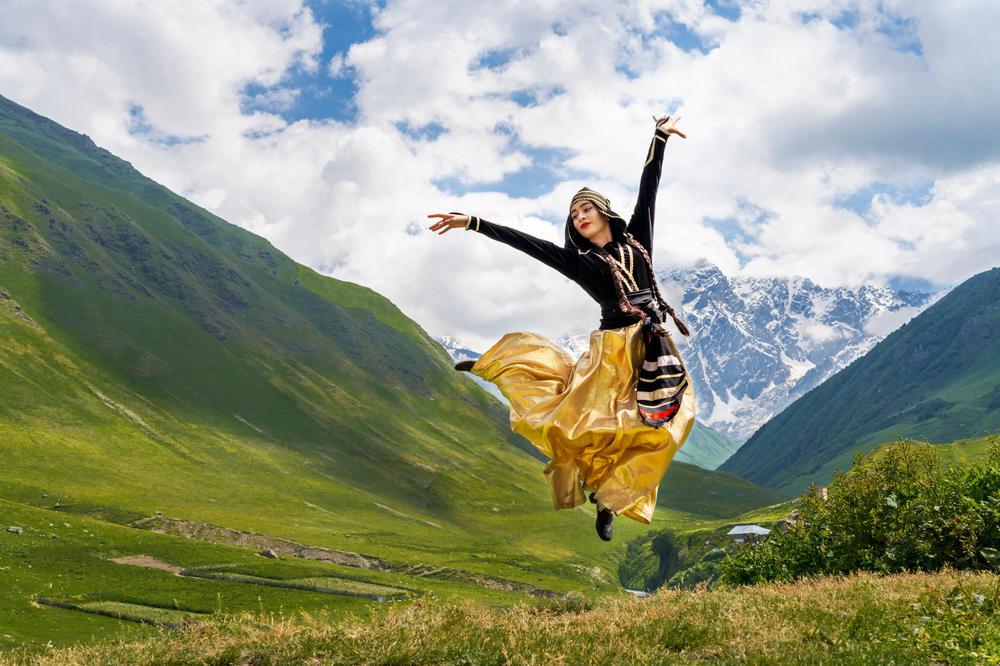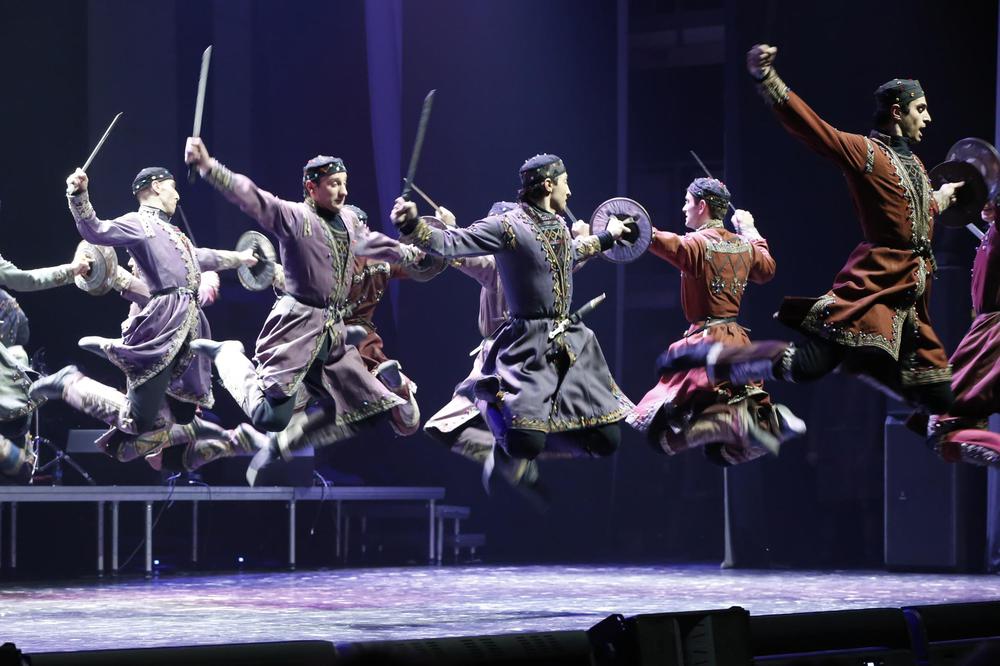Georgian folk dance, a vibrant and dynamic art form, stands as a testament to Georgia's rich cultural heritage. This article delves into the intricacies, history, and modern expressions of Georgian folk dance, offering insights into its significance and where to experience these captivating performances.
The Essence of Georgian Folk Dance
Georgian folk dance is not merely a form of entertainment but a narrative medium that encapsulates centuries of Georgian history, culture, and tradition. It's characterized by intricate footwork, acrobatics, and a blend of solo, pair, and group performances. Each dance narrates a unique story, reflecting various aspects of Georgian life such as rituals, work, games, and humor. Men's dances often showcase agility and strength, while women's dances exude grace and subtlety, creating a harmonious blend of power and elegance.
A Journey Through History
Tracing its roots back to ancient times, Georgian folk dance has evolved while retaining its distinct Georgian identity. Historical references date back to the 5th century BC. Over time, influences from Persian, Turkish, and Russian cultures have interwoven with the native styles, enriching the dance's complexity and appeal. Despite its use as a propaganda tool during the Soviet era, Georgian folk dance has preserved its authenticity and continues to be a vital part of Georgian culture.
The Best Places to Experience Georgian Folk Dance
Tbilisi:
The heart of Georgian culture, Tbilisi offers numerous venues like Marjanishvili Theater and Rustaveli Theater for experiencing Georgian dance. The Georgian National Ballet Sukhishvili, renowned for its energy and athleticism, is a highlight.
Sighnaghi:
Known for its scenic beauty and architecture, Sighnaghi hosts vibrant performances, particularly at Pheasant's Tears Winery, where dance is paired with wine tasting.
Batumi:
This seaside town offers performances at the Batumi State Musical Center and Adjara State Philharmonic Hall, showcasing traditional Georgian music and dance.
Mtskheta:
Near Tbilisi, Mtskheta provides a historical backdrop for folk dance performances, especially during summer.
The Dance Troupe Spotlight: Sukhishvili Georgian National Ballet
The Sukhishvili Georgian National Ballet, originally the Georgian State Dance Company, was founded nearly 70 years ago by Iliko Sukhishvili and Nino Ramishvili. This renowned troupe has a storied history, starting from its initial performances under the scrutiny of Soviet officials to gracing some of the world's most prestigious stages, including the Albert Hall, The Colosseum, The Metropolitan Opera, and Madison Square Garden. Their performances, characterized by energetic music and vigorous choreography, showcase the diverse cultural heritage of Georgia. The male dancers exhibit strength and agility with jumps, spins, and the use of traditional weapons, while the female dancers enchant with their elegant and fluid movements. These elements, combined with the vividly colored costumes, reflect Georgia's rich history and the diverse influences of the various regions within the country.
Over the years, the Ballet has evolved under the guidance of Iliko Sukhishvili Jr., the founder's grandson. He has introduced dynamic elements and improvisation into the performances, especially for the female dancers, while maintaining the core essence of the traditional choreography. This innovative approach has influenced the broader Georgian dance scene and sparked discussions among traditionalists. Today, the Georgian National Ballet is a large ensemble with 70 dancers and a small orchestra, and it runs a dance school that has adapted to modern challenges, such as offering online lessons during the COVID-19 pandemic. The company's commitment to presenting Georgia's history and regional diversity through dance continues, with the Sukhishvili family still at its helm, ensuring the troupe remains a vital part of Georgia's cultural identity and a symbol of national pride on the international stage.
Regional Variations and Famous Dances
Georgian folk dances vary by region, each with unique characteristics and music accompaniments. Notable dances include:
Kartuli:
A symbol of love and respect, this dance features a man showing deference to a woman without touching her, symbolizing a chivalric courtship ritual.
Khorumi:
Originating from ancient Georgian culture, this dance typically performed by men, narrates a story of battle and victory, accompanied by traditional instruments.
Adjaruli:
Known for its playful mood and informal interactions between men and women.
Partsa:
Originating from Guria, characterized by its fast pace and festive mood.
Kazbeguri:
From the Caucasus Mountains, this dance portrays the region's ruggedness through vigorous movements.
Khanjluri:
A dance based on competition, involving skillful use of daggers.
Khevsuruli:
A complex dance combining elements of love, courage, and competition.
Mtiuluri:
A festive mountain dance focusing on group competition and individual skill.
Tips for Attending a Performance
To fully enjoy a Georgian folk dance show, it's advisable to arrive early, dress appropriately for the formal setting, show respect during the performance, and engage by clapping along with the music.
Conclusion
Georgian folk dance is more than an art form; it's a living narrative of Georgia's history, culture, and spirit. Whether in Tbilisi, Sighnaghi, Batumi, or Mtskheta, witnessing these performances firsthand is a must for anyone visiting Georgia.




 Rustaveli Theater Performances
Rustaveli Theater Performances
 Georgian Polyphonic Singing Concerts
Georgian Polyphonic Singing Concerts
 Georgian Puppet Theaters
Georgian Puppet Theaters





